|

THE SMALL BOX RESPIRATOR The Small Box Respirator was without a doubt the single most important piece of equipment carried by a WWI soldier on the battlefields of France. The mask carried by the Doughboys was either a British mask or a virtual copy of that worn by the British. It consisted of a rubberized fabric face piece held in place by elastic straps. A supply hose ran from a canister containing a variety of filtering elements. Inside the mask was a mouthpiece similar to that found on a snorkel. There was also a clip that was placed over the nose to prevent breathing any air that was not drawn directly through the mouthpiece. A one way flutter valve on the front of the mask allowed exhaled air out but hopefully kept gas from entering the mask. The mask and filter canister were carried in a canvas bag that was worn secured in the center of the chest for easy and quick access. The entire arrangement was clumsy and uncomfortable. The masks were hot and difficult to breath through. The eyepieces tended to fog up and limit vision. Movement was restricted by the necessity of making sure the mask did not get knocked aside or damaged. These factors, aside from the casualty effects on unmasked or improperly masked soldiers are what made gas warfare so effective. The enemy could be worn down physically and morale affected by repeatedly causing your opponent to don masks
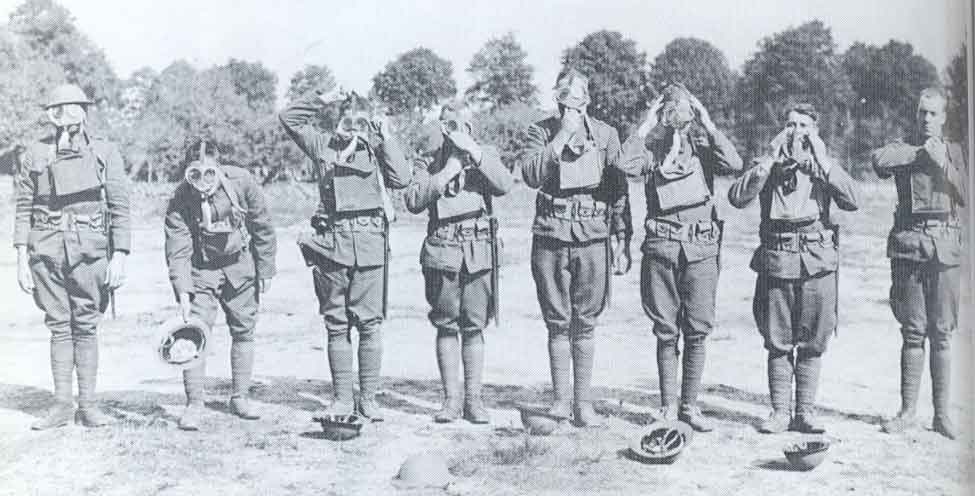
Eight steps to put on and adjust the SBR are shown in this photo from right to left.
Signal Corps photograph from the National Archives

Photo of Luther W. Ferguson (unit unknown) and friend showing the gas mask being worn at the "alert" position
photo courtesy of Roger Rigney
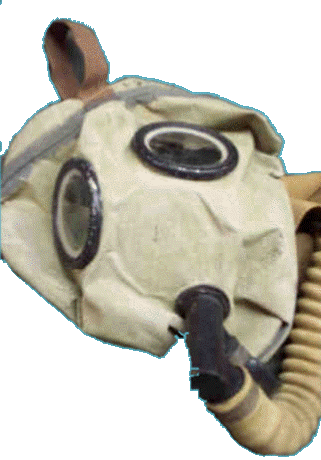 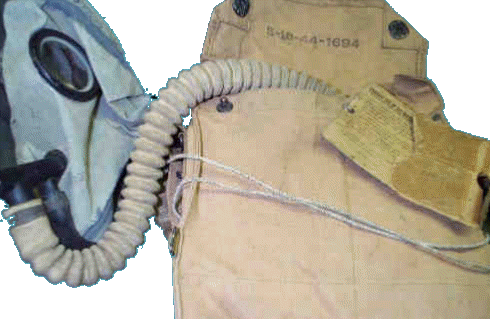
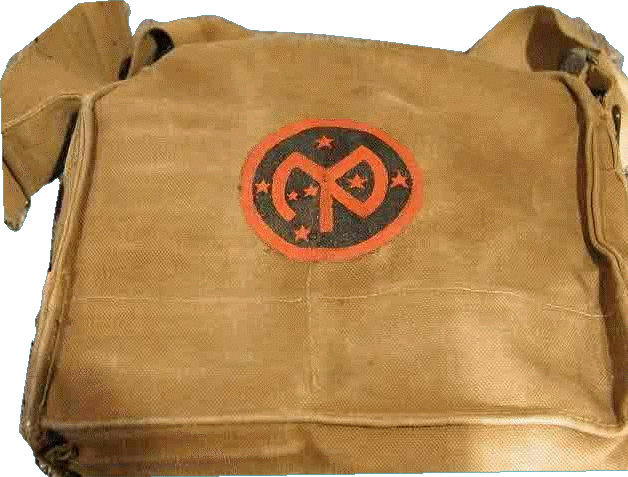
Bag with 27th Division Insignia.
Post-war Victory Parade item

HELMET, M-1917 

Inside of helmet showing liner
America entered the war with no helmet of its own and quickly adopted a version the British helmet. It differed only slightly in small details. The British helmet has a rubber "donut" under the felt attached to the inside crown of the helmet. The loops through which the chinstrap passes are much less substantial on the British version than on the American and the loops are attached with split rivets on the British made helmets. In outward appearence they are virtually identical except for finish. British helmets tend to have a smooth surface and can be found in colors ranging from light tan to dark green. In some British helmets stress marks can been seen from the stamping process running from the crown to the brim. American helmets have a rough textured finish created with sawdust and are usually found in various shades of olive drab. U.S. helmets with unit markings and camouflage are almost always post-Armistice.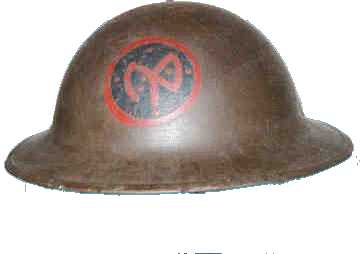
A 27th Division helmet painted with the unit insignia post-armistice. They are also commonly found shellaced. These helmets are sometimes refered to as "Victory Parade" helmets. A 107th "Victory Parade" helmet is commonly found with a darker shade of green paint. The regiment did this so they would stand out from the rest of the 27th Division in the March 25, 1919 Victory Parade.

BELT, CARTRIDGE, DISMOUNTED M-1910 More commonly called a rifle belt. It held 100 rounds of rifle ammunition in 10 pockets; two 5 round stripper clips in each pocket. The top belt is of a woven construction and is called the "Mills Belt" after its manufacturer The bottom belt is of the more common sewn style. Holes along its bottom edge allowed equipment to be attached to the belt. 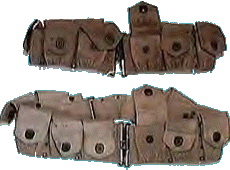
Top: Mills Pattern (woven)
Bottom: Sewn construction
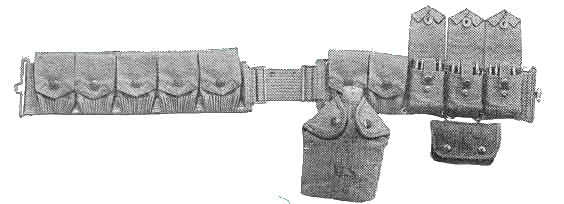
 BELT, PISTOL, DISMOUNTED 
 FIELD DRESSING & POUCH  

CANTEEN, CUP & COVER  
The brass equipment disk in the left view indicates use by a member of the 105th Infantry.

MODEL 1910 HAVERSACK
The haversack carried all of a soldier's gear including shaving kit, extra socks and underwear and rations. With an attachment called the "pack carrier", the shelter half with pegs and poles, raincoat (or poncho) and blanket could be attached to the bottom of the haversack. The meatcan was carried in a pouch attached to the outer flap of the haversack. There was also attaching grommets for the entrenching tool and bayonet on the flap. The shoulder straps attached to the rifle belt to distribute some of the weight of a full ammo load. 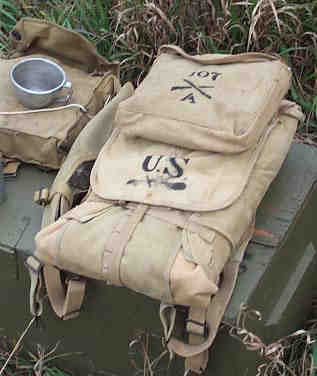
Unit markings were often stenciled on the meat can pouch. The crossed rifles denote infantry; the "107" and the "A" indicate A company of the 107th Infantry Regiment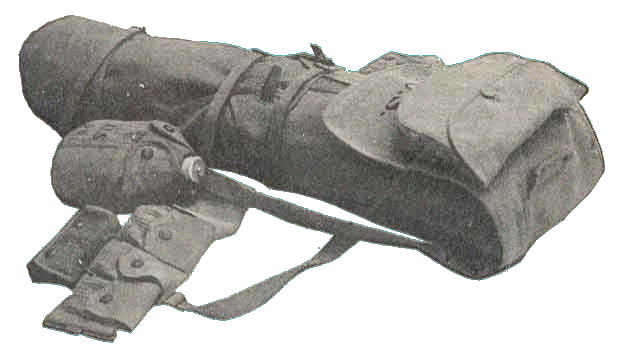
The 1910 haversack assembled with pack and rifle belt attachedThis entire assembly is often mistakenly referred to as the "pack". The "pack" is the roll consisting of the shelter half, raincoat and blanket shown on the left of the above photograph and attached to the bottom of the haversack by the pack carrier.
PAGE 2


|